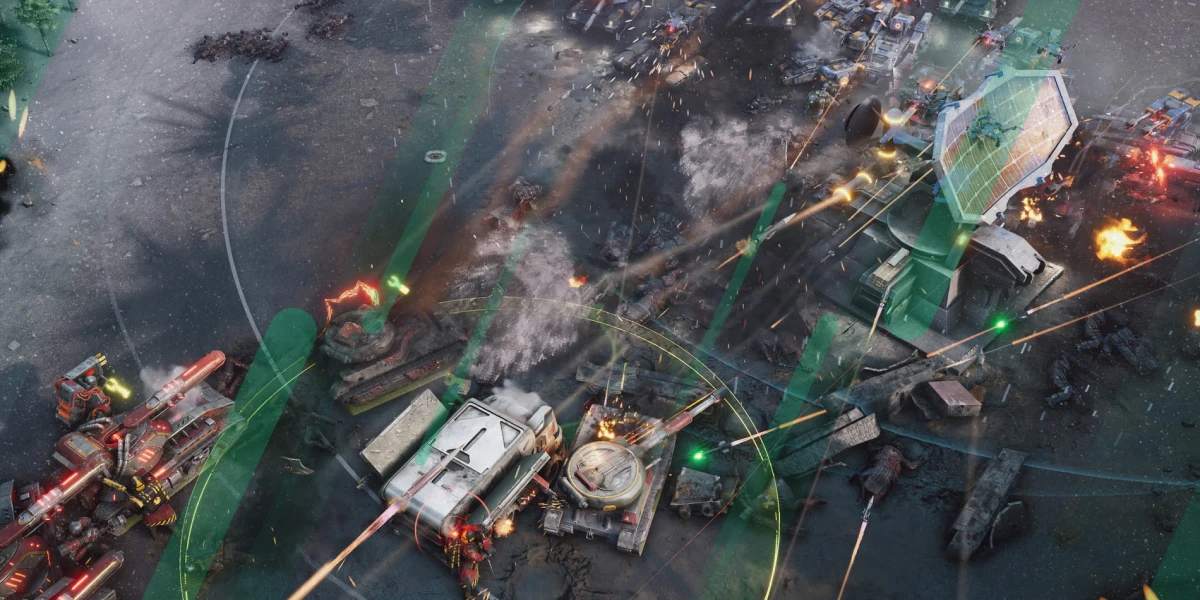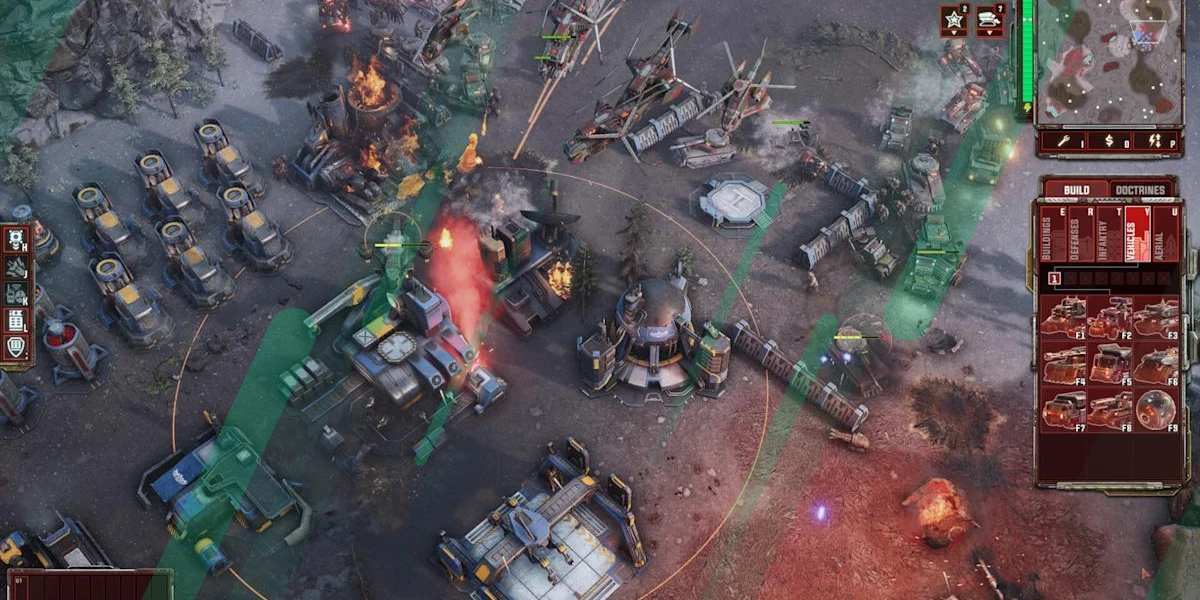Tempest Rising – A New RTS on the Rise
One of the many things that made the game stand out was the fact that it ran on Unreal Engine 5 – which is the main opponent of many former RTS titles out there that eventually led to their irrelevance. Sure, some remakes over the years re-released known titles such as Battle Realms with its Zen Edition, Warcraft III with the Reforged edition, or Age of Mythology with its remaster – but let's be clear, not even Age of Empires managed to match what Tempest Rising has to offer in terms of visuals and smooth gameplay.

That's because Tempest Rising is polished, designed to perform on the highest hardware that technology has to offer today. Years ago, we were waiting for Generals 2 to achieve this feat with the Frostbite 2 Engine, only to falter and not make a release at all. That just says a lot about the difficulty of releasing a title that runs on the latest game engine of its time, and Tempest Rising did just that.
Still, we have seen how the game has been a polished title right from its demo gameplay. So when the full game released, there were sky-high expectations – and it met them well so far. That says a lot about how Tempest Rising has proven to be a great game to look out for, at least until another RTS title tries to come and take its place on the pedestal of RTS kings for 2025.
What's Tempest Rising All About?
Tempest Rising enters with an alternate timeline in which the Cuban Missile Crisis of 1962 did not end as it did, but instead ignited a Third World War that eventually led to irradiated areas around the world and opened up fissures that spawned an alternate energy source called Tempest to help on the major energy crisis.
Since then, the Global Defense Force and the Tempest Dynasty have become warring factions and have battled for control of the Tempest for three decades. The campaign sees both sides with 11 missions each, and it allows players to experience both sides. The Veti, an alien race, also comes into action in the game but not as a playable faction and can only be encountered in single-player.
The Good: A Well-Planned RTS Title
Tempest Rising is a compelling entry into the world of real-time strategy games, evoking a strong sense of nostalgia while introducing modern mechanics that elevate the experience. One of its standout qualities is the way it captures the spirit of classic RTS titles like Command & Conquer, delivering a familiar yet refined gameplay loop that will appeal to both veterans of the genre and newcomers.
Another major strength lies in its visual presentation; the game offers highly detailed environments and units that bring the battlefield to life, making every encounter feel dynamic and immersive. The faction design is another highlight, with each side offering unique playstyles and strategies, encouraging players to experiment and find the approach that best suits them.

The campaign is engaging, filled with varied mission objectives and a narrative that adds depth without getting in the way of the action. Lastly, Tempest Rising benefits from a tight and responsive control scheme, ensuring that managing units and base-building remains intuitive, even during intense skirmishes. Altogether, the game stands as a polished and thoughtful homage to RTS classics, with just enough innovation to make it feel fresh.
The Bad: An Open-Ended Game Leaves Expectations
While Tempest Rising succeeds in many areas, it's not without its shortcomings. One of the more noticeable issues is the pacing of certain missions, which can sometimes feel uneven, with drawn-out objectives that undercut the tension and momentum the game tries to build. This is compounded by a campaign story that, despite some effort, often feels generic and underdeveloped, lacking the strong characters or narrative hooks that could have made it truly memorable.

The AI can also be hit-or-miss, occasionally displaying erratic behavior or failing to provide a real challenge, particularly in skirmish mode where seasoned players may find the opposition underwhelming. Another area of concern is the pathfinding, which at times can be frustratingly inconsistent, causing units to take awkward routes or bunch up in chokepoints during heated battles.
Lastly, while the game pays homage to classic RTS titles, it sometimes leans too heavily on nostalgia without pushing the genre forward in meaningful ways, resulting in gameplay that can feel derivative rather than innovative. These flaws don't ruin the experience, but they do hold Tempest Rising back from reaching the heights it aspires to.
Is Tempest Rising an Esports-Worthy RTS Title?
Whether or not Tempest Rising is a deserving esports title in the long run is hard to argue at this point. Still, with the esports landscape starting to be more competitive and the search for something new beginning to really start its impressive chase, it does seem that it has a potential.
At its core, Tempest Rising gets a lot right. The gameplay is tight and responsive, with a strong emphasis on classic RTS fundamentals – base-building, resource control, unit micro, and strategic positioning. These mechanics, time-tested by legendary franchises, naturally lend themselves to competitive depth. The game also offers faction asymmetry, with each side bringing its own unique units and playstyle. This variety encourages strategic diversity and ensures no two matches feel quite the same.

For hardcore RTS fans, these are promising signs. The game has a skill ceiling high enough to reward experienced players while remaining accessible enough for newer ones to jump in and start learning. That said, great gameplay alone doesn't make a game esports-ready. To truly thrive in the competitive scene, Tempest Rising needs more than just solid mechanics – it needs infrastructure.
As of now, the multiplayer ecosystem is still relatively underdeveloped. There's limited ranked matchmaking, few tools for spectators or casters, and no robust in-game replay system. These missing features make it difficult to support a vibrant tournament scene or encourage professional-level play. Without strong developer support – think balance patches, seasonal ladders, and sponsored events – it's hard for a game to maintain the momentum needed to grow as an esport.
Community-driven esports have existed before (Age of Empires II being a good example), but in most successful cases, there was either a passionate grassroots following or long-term developer backing. Tempest Rising has a niche but loyal fanbase, and if the developers choose to invest in competitive features and community engagement, there's potential.
Still, it's a long road. Games like StarCraft II and Warcraft III didn't just become esports legends overnight – they had years of updates, developer involvement, and community tournaments behind them.
What to Expect from Tempest Rising in the Years to Come?












_800x800.webp)
































